Thank you for visiting! By the way… any links on this page that lead to products on Amazon and other stores/partners are affiliate links Aquarium Store Depot earns a commission if you make a purchase.
Whether you have freshwater aquariums or saltwater tanks, aquarium nitrates are the ultimate bane of an aquarist’s life.However, in this article, I’ll shed some light on what nitrates actually are, and how high nitrate levels of nitrate influence your tank water.
Later, I’ll also share some quick and easy fixes to get rid of nitrate from aquarium water.
Key Takeaways
- Nitrates are the least toxic compared to Ammonia and Nitrite
- At high levels, nitrate is harmful to your fish
- Water changes, live plants, and specific media can help lower nitrates
What Is It?
Nitrate is a component of the nitrogen cycle and it is formed when bacteria do the conversion of ammonia. The bacteria named, Nitrosomonas1 first convert ammonia into nitrite and then it converts nitrite into nitrate.
The names, nitrate, and nitrite are similar and beginner aquarists usually confuse them. However, nitrite is very toxic to the fish, while nitrates are less toxic. That’s because most aquarium fish may be poisoned and killed by nitrite concentrations of just 1 part per million, whereas nitrate concentrations can occasionally be 100 times higher. Some people associate high nitrate levels with bothersome algae and Old Tank Syndrome, which causes nitrate levels to rise, pH levels to fall, and any newly introduced fish to be stunned and die despite ammonia and nitrite tests coming back negative.
The fun part about nitrate is it’s present almost everywhere. You might just be replacing your old tank water with new tap water and there are high chances of nitrate being present. Fortunately, it’s not as deadly as nitrite.
How To Lower Nitrates In Fish Tank
One of the easiest ways to lower nitrates in a fish tank is by changing your tank water frequently. The other quick ways include adding live plants, removing filter media, and avoiding overfeeding and overcrowding.
We have a video from our YouTube Channel for those who want a visual explanation. As always, our blog post goes into more detail. Feel free to look at both. If you like our channel, be such to subscribe as we post new videos every week!
1. Frequent Water Changes
Your nitrate level will decrease if you switch to tap water as long as it contains less nitrate than your tank water. Test the nitrate level in both your freshwater tank and your tap to check that this is the case.
Also, remember to maintain the right temperature of the water you’re replacing and make sure it’s treated for chlorine or chloramine.
Seachem prime is a easy to use and affordable choice when it comes to remove chlorine and chloramines from your tap water. Highly recommended!
Avoid using tap water if the nitrate levels are around 40 ppm or higher. It’s best to use RO water if the nitrate levels are too high in your tap water. The benefit of RO water to your aquarium fish is many as it removes nitrates, phosphates, chlorine, and minerals from tap water. Also, RO water is soft water with low pH, so suits the fish that prefer such water conditions.
Summary:
- Perform water changes frequently.
- Vacuum the gravel to remove debris and fish waste
- Change your filter pads every once or twice a week to remove uneaten food rots or fish wastes that add to nitrate levels
- Make sure to test your tap water for nitrates before introducing it into the tank.
2. Live Plants
The old tank syndrome or high nitrate accumulation in your tank is very common. If you have freshwater aquariums, the problem seems quite under control. However, in saltwater tanks, extreme nitrate levels can cause a nuisance. It is said to lower nitrates and keep them below 20 mg/L for a healthy ecosystem.
To cater to this, a planted aquarium works best to pull nitrates from the water for nutrition. However, there are some plants better than others.
As plants might really run low on this important nutrient after using it all up, aquascapes actually inject nitrate in the form of nitrogen, or N. Other advantages of live aquatic plants for freshwater aquariums include helping to control algae growth, sheltering young fish and fry, and providing areas for fish to lay their eggs. Just make sure any aquarium with plants has the appropriate lighting and additional fertilizers to keep the plants thriving and healthy.
Aquarium Plants That Work Best
Water Sprite
Water sprite or Indian Water Fern is a good live plant for most community tanks. They are also very useful, low-maintenance, and beautiful plants that keep your aquarium nitrate, ammonia, and nitrite free.
Readily available and easy to grow. This fast growing plant will soak up nutrients and thrive in low light
The leaves of water sprite are fast growing, so they quickly absorb all harmful toxins and chemicals from the tank water. Hence, they are powerful natural filters for your aquarium. However, they are very fast-growing plants that grow like a weed and may tangle into other plants. So, it’s important to prune them occasionally without harming the leaves.
Duckweed
Duckweeds are excellent floating plants that lower nitrates in your tank naturally. In the wild, you will usually find them sitting on top of the surface of many lakes and ponds.
In the aquarium hobby, duckweed is known to control nutrients and add aesthetics to the fish tank. However, like water sprite the growth rate of duckweed is very high, leading to uptake nutrients, equipment clogs, and many other problems. Therefore, it’s important to trim the branches occasionally.
Water Wisteria
An easy to grow and great beginner floating plant to try!
Water wisteria is one of my top picks for nitrate-reducing plants because it is, aesthetically pleasing with its gorgeous palmate leaves. Plus, it’s so easy to grow and low-maintenance. However, always grow this plant in the background as it turns very tall and bushy within no time.
Frogbit
If you have a larger aquarium tank, the frogbit plant should be your go-to. Appearance-wise, frogbit is very similar to duckweed and nitrate uptake.
A fast growing floating plant. Known to be invasive in North America. Handle with care!
However, the leaves are thick and circular in shape.
Frogbit is very similar to duckweed in appearance and nitrate uptake. Your community fish can thrive and seek shelter in their long roots. But extra maintenance should be done to keep the roots and growth at bay.
Hornwort
A common choice for nitrate reduction in aquariums is hornwort. Aquarists wishing to lower nitrate levels in their tanks can use this rapidly growing aquatic plant because of its special capacity to absorb nitrates from the water column.
A tall and easy to grow freshwater plant. One of the least demanding background plants available
As hornwort can absorb a lot of nitrates from the water column, it is a fantastic choice for aquariums with high nitrate levels. The plant is a helpful addition to any aquarium since it also lowers ammonia and phosphate levels.
Hornwort may drastically reduce nitrates in as little as two weeks, but it’s crucial to keep in mind that it should be used in conjunction with nitrate-reducing systems. The aquarium must be regularly checked for nitrate levels in order to remain healthy and free of them.
Anacharis
Anacharis not only create nitrate remover but they also recognize to be a fantastic food source for many varieties of freshwater fish, including goldfish, tetras, and guppies. It also makes a terrific plant for breeding tanks because of its long, thin leaves, which offer excellent hiding places for fry.
Excellent as a food source and sucks up nutrients in an aquarium. One of the easiest freshwater plants to care for
Water Lettuce
One other live plant species that may remove nitrates from the tank water is water lettuce. A shallow-water pond’s nitrogen content may be effectively extracted by species like pistia stratiotes to the extent of 83%. You should plant this floating plant if you want both aesthetics and functionality.
A popular floating plant that is used in ponds and aquariums!
3. Nitrate Reducing Media
To remove nitrates, nitrate removal filter media is used to lower nitrates in fish tanks. As mentioned earlier, nitrates are the natural by-product of the nitrogen cycle. The process allows beneficial bacteria to convert fish waste and uneaten food into less harmful substances.
In order to remove nitrates, many aquarists equip the filer with high-performance filter media, such as the Biome Ultimate Filter Media, which is highly porous with a unique structure that absorbs water seamlessly. Filter media works in an exclusive way and supports beneficial bacterial bloom that is good at removing nitrate levels.
However, there are a few pointers you have before using nitrate-removing filter media in your tank.
Filter media type
It is important to choose the right type of filter media that suits your aquarium size and filtration system. There is a variety of nitrate-removing filter media in the market, including resins, pellets, sponges, sintered glass, etc. Biome Ultimate Filter Media is made of premium quality sintered glass and is ideal for Canister, HOB, and sump filters.
Editor's Choice!
This is the best media you can buy for your aquarium. It does it all - removes ammonia, nitrite, and nitrates
Preparation of filter media
It is crucial to rinse the media to remove any dust particles and debris. While rinsing the media, always use fresh water and avoid the use of soap or detergents, as they can potentially harm the beneficial bacteria in the media.
Placement
Whether the media should be placed in the filter compartment or inside the filter bag, place it in the filter and make sure to follow the instructions on the label correctly.
Keep An Eye On Your Levels
I recommend using a water testing kit to monitor the nitrate levels in your aquarium. After adding filter media, it should take around 2 weeks to notice a significant decrease in nitrate levels.
Replace The media
Over time, media might become dirty and saturated and will need to be routinely changed. For information on when to change the media, consult the manufacturer.
4. Equipment Methods
Reverse osmosis, water distillation, and ion exchange methods can remove nitrate levels from water. However, remember that it’s not easy to get rid of nitrate levels through sediment filters, carbon filters, or even traditional ion exchange water softeners. To get rid of nitrates effectively, it’s important to install an anion resin tank. Also, if you want to reduce nitrate levels in your tap water, it’s crucial to install an under-sink RO system. If you have a small fish tank, it’s recommended to use a water distiller to reduce nitrate from the water.
Reverse Osmosis Method
To use the reverse osmosis method, you have to install an RO unit that is specifically designed for aquariums. The RO unit is usually connected to the source of tap water. The water is then transferred through the system which removes toxic nitrate, and other contaminants.
After the removal of all the nitrate, the pure water is collected in a tank that could later be used for aquarium water changes and regular maintenance by topping off the tank.
Important
The reverse osmosis process does not guarantee proper water quality. It is even proven to remove essential nutrients and other beneficial minerals from the water along with nitrate removal. Therefore, it is important to re-mineralize the water to maintain a healthy environment for your fish.
Also, the RO water system demands regular maintenance to prevent the growth of bacteria and other microorganisms in the fish tank.
Ion Exchange Method
Though not commonly used, the ion exchange method effectively removes nitrate from the fish tank.
In this method, you pass the water through a resin bed with charged particles; ions. These ions in the resin bed attract the oppositely charged particles in water, including nitrates. Hence, the resin becomes saturated with nitrates and other contaminants. It’s best to regenerate or replace the resin bed to effectively remove nitrates from the water in the future.
Water Distillation Method
If you want to remove nitrate, dissolved solids, minerals, and other toxic substances from water, you should go for the water distillation method.
In this method, the water is boiled until steam is produced. The steam is later cooled and condensed into liquid form. While the water is boiling, it removes nitrates and other toxic substances. As a result, you get pure distilled water free of nitrates and other dissolved solids.
5. Algae Turf Scrubber (ATS)
Caution: If you have a planted aquarium, DON’T try this method!
The Algae turf scrubber method is ideal for freshwater aquariums or saltwater tanks through a process called biological filtration.
In this method, the ATS device used light and nutrient-rich water flow to encourage bacterial growth, which absorbs nutrients, such as nitrates from the fish tank—ultimately removing them from the core.
Turf scrubbers are well known in saltwater aquariums for removing nitrates and phosphates
To speed up the process and effectiveness of ATS, it’s crucial to provide adequate lighting and nutrient-rich water flow for smooth algae bloom. It’s also advisable to clean your algae mats and screens to prevent clogging.
6. Refugium Sumps (Saltwater)
Refugium sumps are a natural form of biological filtration that effectively reduces nitrates in the tank. They are ideal for a saltwater tank.
In an aquarium system, a refugium sump is a separate compartment that is often stocked with living plants, algae, and other microorganisms. Nitrates and other dissolved nutrients are absorbed by living plants and microbes when water passes through the refugium, changing them into less hazardous forms. The primary aquarium is then filled with purified water.
The Best Aquarium Sump
Developed for the triton method and feature rich, this the best overall sump you can purchase today
You would normally require a sump tank, a water pump, and suitable lighting for the living plants and algae to set up a refugium sump for nitrate removal. To avoid overgrowth and to guarantee adequate nitrogen intake, the living plants and algae in the refugium would need to be routinely clipped and removed.
7. Live Rock and Porous Rock (Saltwater)
Live rock and porous rocks are the types of rocks, which are directly harvested from the ocean. These types of rocks have living organic matter such as bacteria, algae, and invertebrates to break down organic waste, such as nitrates. When the water in your aquarium flows through these rocks, the bacteria in them convert nitrates into nitrogen gas, which is less harmful.
This is the best aquacultured rock you can find in stores and online
However, the process of biological filtration through these rocks is slow and may be insufficient, depending on the tank size. To use live rock and porous rock as natural filters, just add the rock to your fish tank and let it establish a biological system.
Pros
- Source of natural biological filtration
- Provide a natural aesthetic to the aquarium
- Require little to no maintenance
Cons
- They can be costly
- Can be contaminated
- Takes time to establish a biological filtration system
- May not be effective for heavily planted aquariums or stocked aquarium
8. Feed Less
Feeding less is one of the most significant ways to lower nitrates in your tank. Also, it’s important to set a feeding routine for your fish. During the feeding time, make sure to shut off all the filters and pumps. Add a smaller amount of food and let the fish consume it all. Feed your fish for no more than 5 minutes. Otherwise, there will be leftover food trapped in filters, leading to higher nitrate levels.
Key Takeaways:
- Always feed smaller amounts of food because overfeeding can lead to increased nitrate levels
- Feed only twice or thrice daily to prevent excess waste
- Use high-quality food with fewer fillers and more nutrients for better digestion
9. Avoid Overcrowding
Any aquarium’s nitrate level should directly correspond to how much ammonia the fish produce. Nitrate production increases with the number of fish present. The more fish you have, the more nitrate they will produce. As a result, tanks are frequently overstocked with too many fish and overfed in tanks with persistent nitrate issues. You may reduce the amount of ammonia, fish waste, and subsequent nitrate created by keeping fewer, smaller fish without overfeeding them.
To avoid overcrowding your tank, start out with one small fish per 10 gallons of water. Later, add two or three fish weeks apart and test the nitrate levels in your tank. As soon as the nitrate levels start to rise, stop adding fish to your tank.
FAQs
What is the fastest way to lower them?
The fastest and easiest way to lower nitrates in your aquarium is by performing partial water changes by removing a portion of tank water and replacing it with fresh, clean water.
How do I lower them in my fish tank naturally?
Fortunately, we have some excellent natural filters in the form of live plants. Live plants absorb nitrates and other nutrients from the tank and promote a healthy natural ecosystem
What can I put in my tank to lower them?
You can put nitrate-removing filter media in your filter to lower nitrates in your tank. Additionally, you can also use live and porous rocks if you have saltwater tanks.
Why are my levels so high?
There can be several factors associated with high nitrate levels in your fish tank. They can be:
Too many fish
Overfeeding
Improper filtration
Dead fish or dead plants (decomposing plant matter)
Tap water high in nitrates
How do you fix high levels in a fish tank?
You can fix and avoid the high nitrate levels in your fish tank by testing the water regularly. Also, regular water changes and maintenance is the key to keeping your tank ammonia and nitrite free.
Can fish survive high levels?
Yes, but only for a short period of time. Overexposure to high nitrate levels can result in reduced oxygen levels, increased stress, and health-related problems.
How long does it take for levels to go down in the aquarium?
It depends on the nitrate levels, the efficiency of the filter system used, the tank size, the water changes schedule, etc. Generally, you will notice a considerable difference in nitrate levels just after a water change. However, if the levels are too high, it may take multiple water changes to reach a safe level.
Final Thoughts
High levels of nitrates can affect the health of your fish and the overall aquarium ecosystem adversely. Therefore, it is important to monitor the nitrate levels through regular maintenance and water testing. It’s also crucial to add live plants in your aquarium to keep the fish healthy, happy, and thriving. Lastly, make sure to never overfeed your fish and overcrowd your tank as it may cause a nitrate spike, leading to severe stress and other health problems.
- About the Author
- Latest Posts
I’m thrilled that you found Aquarium Store Depot! Here you’ll find information on fish, aquariums, and all things aquatics related. I’m a hobbyist (being doing this since I was 11) and here to help other hobbyists thrive with their aquariums! I adhere to a high quality Editorial Process and Review products with real life field usage and practical analysis.

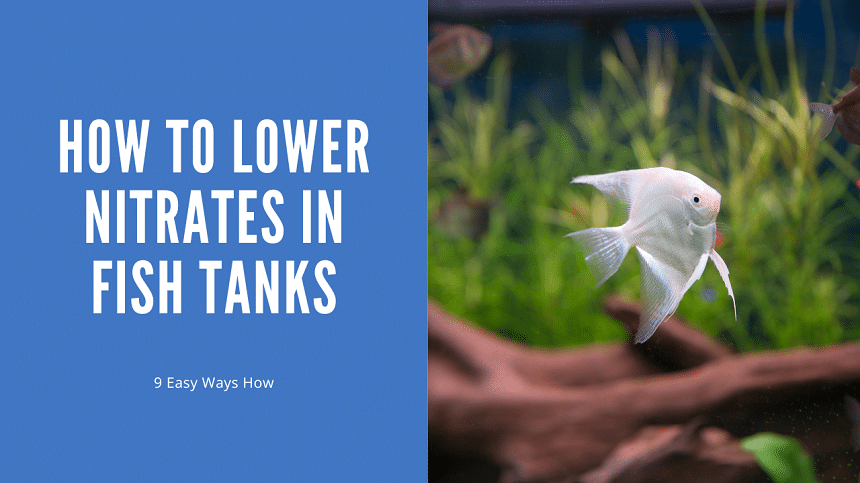
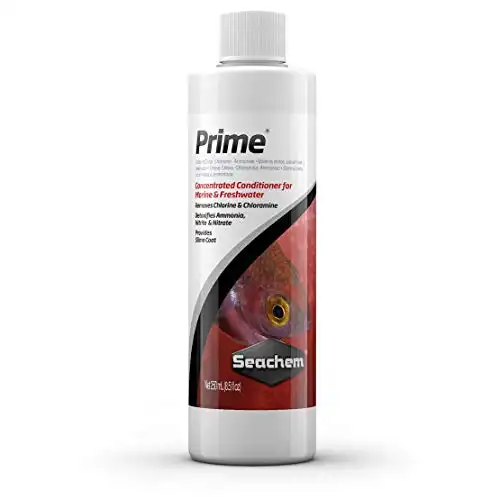


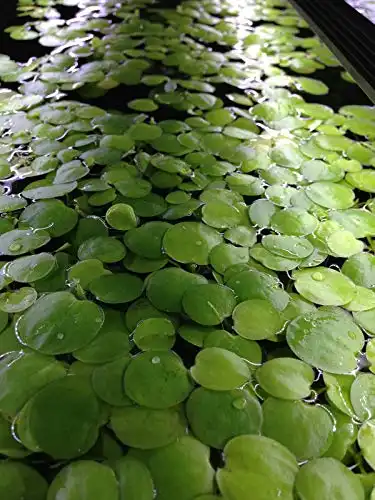

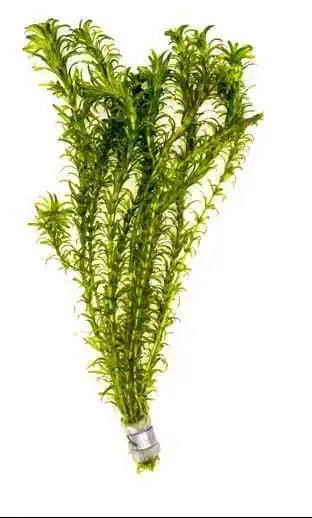

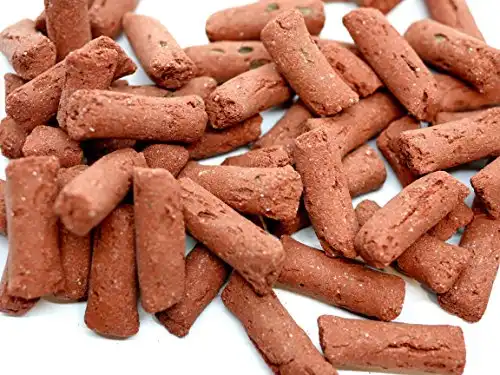




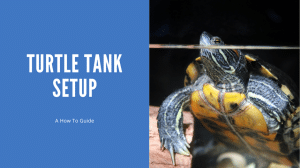
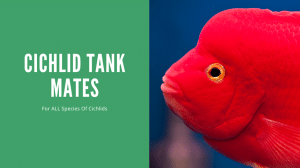

Really very happy to say, your post is very interesting article
Really very happy to say, your post is very interesting article
Thank you for your comment
Way cool! Some extremely valid points! I appreciate you writing this article and the rest of the site is also really good.
Thank you for your comment and thank you for reading 🙂